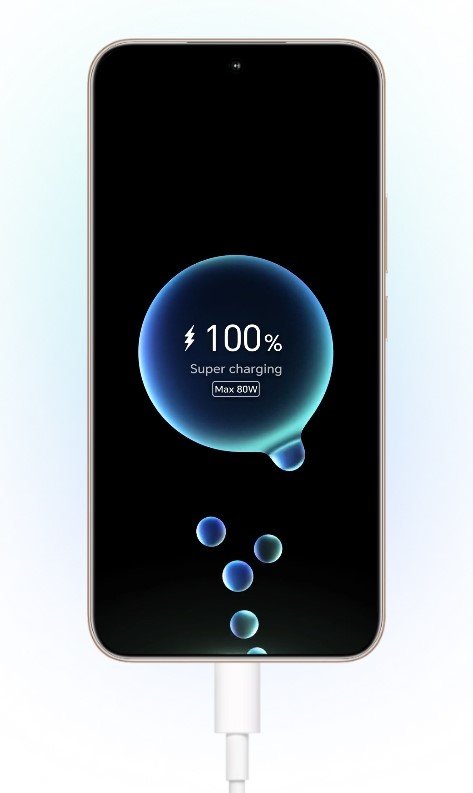What’s the Safest Way to Charge Your Smartphone Battery?

Smartphones have become essential tools in our daily lives, but their batteries often degrade faster than we’d like. Many users unknowingly damage their batteries through poor charging habits, leading to shorter lifespans and frequent replacements. A well-maintained battery not only lasts longer but also ensures consistent performance over time. Modern lithium-ion batteries are durable, but they require proper care to maximize their potential. Understanding how charging affects battery health can save you money and frustration in the long run. In this article, we’ll explore the safest charging methods, debunk common myths, and provide practical tips to extend your battery’s lifespan.
Best Charging Practices for Battery Longevity
The 20-80 Rule: Why Partial Charging is Better
Keeping your battery between 20% and 80% charge is one of the most effective ways to prolong its lifespan. Lithium-ion batteries experience less stress when operating in this range compared to being fully charged or completely drained. Charging to 100% regularly increases internal resistance, while deep discharges below 20% strain the battery’s chemical structure. Many modern smartphones now include battery optimization features that slow down charging past 80% to reduce wear. If your device supports it, enabling this feature can help. For those who need a full charge occasionally, it’s fine—just avoid making it a daily habit. Partial charging may seem inconvenient, but it significantly extends your battery’s usable life.
Overnight Charging: Risks and Solutions
Leaving your phone plugged in overnight is a common habit, but it can harm battery health over time. Most devices continue drawing small amounts of power even at 100%, keeping the battery at peak voltage unnecessarily. This constant trickle charge generates heat and accelerates chemical aging. If you must charge overnight, use a smart plug or a charger with a timer to cut power after reaching 80%. Alternatively, some phones offer “optimized charging” modes that learn your routine and delay full charging until just before you wake up. Wireless charging overnight can also produce excess heat, so it’s better to charge on a flat, well-ventilated surface.
Fast Charging vs. Slow Charging: Which is Safer?
Fast charging is convenient, but it generates more heat, which can degrade battery cells over time. Slower charging (5W-10W) is gentler on the battery and reduces long-term wear. However, this doesn’t mean fast charging is inherently bad—manufacturers design modern fast-charging systems to minimize damage. If you’re not in a hurry, using a standard charger is safer for battery health. For those who rely on fast charging, avoid using the phone intensively while it’s plugged in, as this combines heat from both charging and processor usage. Some devices also allow you to toggle fast charging on or off in settings, giving you more control.
Charging Equipment Safety
Certified Chargers vs. Cheap Knockoffs
Not all chargers are created equal—uncertified or counterfeit chargers often lack proper voltage regulation, leading to overheating or even battery damage. Certified chargers undergo rigorous testing to ensure they meet safety standards, while cheap knockoffs may deliver unstable power. Look for certifications like UL, CE, or USB-IF compliance when purchasing a charger. A good rule of thumb is to stick with chargers from reputable manufacturers rather than no-name brands. Using a faulty charger not only risks battery health but can also pose a fire hazard in extreme cases.
USB-C vs. Lightning: Cable Quality Matters
Cable quality plays a crucial role in safe charging. Poorly made cables can cause inconsistent power delivery, leading to slower charging speeds or even damage to your phone’s charging port. USB-C cables are generally more durable than older micro-USB or Lightning cables, but not all are built the same. Look for cables with reinforced connectors and thicker wiring for better longevity. Avoid using frayed or damaged cables, as exposed wires can cause short circuits. Some manufacturers offer braided nylon cables, which are more resistant to wear and tear.

Environmental Factors in Safe Charging
Extreme temperatures are one of the biggest enemies of battery health. Charging in hot environments (above 35°C/95°F) can cause irreversible damage, while cold temperatures (below 0°C/32°F) slow down charging and reduce efficiency. Avoid leaving your phone in direct sunlight or inside a parked car on a hot day. Similarly, charging in freezing conditions can lead to temporary battery performance drops. If your phone overheats while charging, unplug it and let it cool down before continuing. Ideally, charge your device in a cool, well-ventilated area to maintain optimal battery health.
Common Charging Myths Debunked
“You Should Always Drain Your Battery Completely”
This myth stems from older nickel-based batteries, which benefited from full discharge cycles. However, modern lithium-ion batteries perform best with partial charges. Fully draining your battery regularly stresses its cells and reduces lifespan. Instead, aim to keep it between 20% and 80% for daily use. Calibration cycles (fully discharging and recharging once every few months) are unnecessary for most modern smartphones.
“Leaving Your Phone Plugged in Ruins the Battery”
While keeping your phone at 100% charge for extended periods isn’t ideal, modern devices include safeguards to prevent overcharging. The real issue is heat buildup from prolonged charging, not the act of being plugged in itself. If your phone supports optimized charging, enable it to minimize long-term damage.
“All Chargers Are Created Equal”
As mentioned earlier, charger quality varies significantly. Using a low-quality charger can lead to overheating, slow charging, or even damage to your device. Always opt for certified chargers and cables from trusted brands to ensure safety and efficiency.
Advanced Battery Care Tips
For those who want to maximize battery longevity, consider using battery-saving modes when possible. These modes reduce background activity and optimize performance for efficiency. Additionally, avoid exposing your phone to moisture while charging, as water damage can permanently harm the battery. If you plan to store a device unused for months, leave the battery at around 50% charge to prevent deep discharge. Regularly updating your phone’s software also ensures the latest battery optimizations are in place.
Conclusion
Taking care of your smartphone battery doesn’t require drastic changes—just a few mindful habits. By following the 20-80 rule, avoiding extreme temperatures, and using high-quality charging equipment, you can significantly extend your battery’s lifespan. For those who need both endurance and speed, devices like the HONOR 400 Smartphone with its 6000mAh battery and 100W HONOR SuperCharge offer a great balance of longevity and rapid refueling. With these tips, you can enjoy longer-lasting performance and reduce the need for frequent battery replacements.






